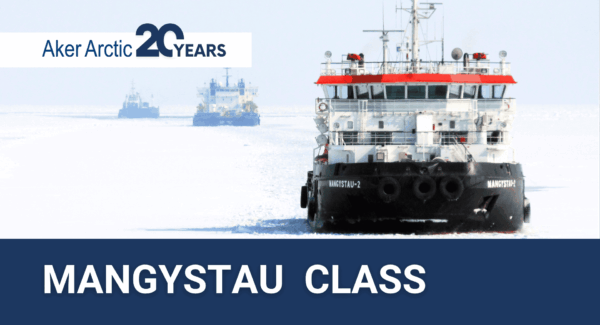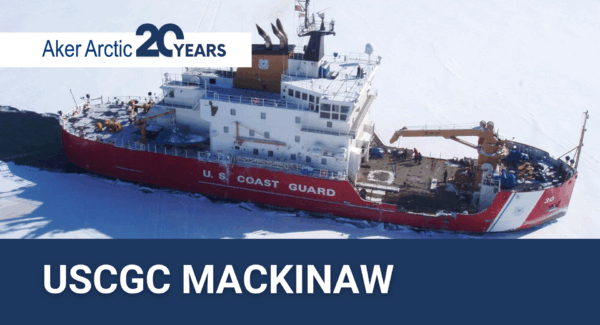Every ice model test requires detailed planning
High-quality, reliable ice model tests are a practical method for verifying ice capable vessel designs and constructions for freezing water areas. But what does a typical testing day look like and why are full-scale tests also necessary?
Our series showcasing typical roles at Aker Arctic continues with research engineer Toni Skogström, the model ice expert at Aker Arctic.

Toni’s primary responsibilities centre around the ice basin, ensuring that ice conditions are meticulously prepared and that every test follows a detailed plan. As a result, all ice model tests are of the highest quality and yield trustworthy results.
A tailored approach for each test
A typical ice model testing day begins with taking measurements of the ice, which the workshop team has prepared the previous day, following a specific ice recipe custom-made by Toni.

Before each test, in accordance with the technical specifications and desired conditions provided by customers or Aker Arctic’s designers, Toni consults Aker Arctic’s database, which contains records from previous ice fields and tests. Using this data, he calculates the precise test preparation parameters needed to meet the test requirements. Variable factors during ice preparation are, for instance, salinity during spraying time and air temperature, while variable factors measured from the ice include thickness, strength, and elasticity.
“Although ice conditions vary worldwide, we have the ability to adapt our model ice sheets to reflect the specific conditions of different regions,” Toni explains.
One test series involves weeks of work
Once the measurements indicate that all ice conditions are correct according to Toni’s plan, the model tests for the day can commence.
The standard ice model tests usually conducted include level ice tests, brash ice channel tests, breaking out from a channel, ice ridge tests, and turning tests. In addition to these performance tests, various operational tests, such as docking, close towing, and sailing in convoy, can also be performed.
“Typically, the testing lasts the entire day, utilising the ice sheet for many different tests, after which two of our team members stay behind to prepare the ice sheet for the following day,” Toni notes.
To an observer, an ice model test may appear to be a quick procedure. However, it often involves several weeks of detailed planning, execution, and finally, analysis of the results and preparation of reports.
“Then, the next model testing series is already lined up, and before you know it, months have passed,” Toni says.

Expanding responsibilities
Toni first joined Aker Arctic during his naval architectural studies, assisting in the model testing laboratory and the ship design department. For his master’s thesis, he investigated structures in ice related to offshore wind investments. In 2014, he joined full-time, taking on responsibility for developing the model testing ice and quality standards.
Over the past ten years, his role has expanded to include additional responsibilities, such as supporting sales and designing complex tests that require the development of new techniques and methods previously unused.
Toni is also the company’s official health and safety representative and is currently studying part-time to become Aker Arctic’s artificial intelligence (AI) expert, helping management explore AI development and related opportunities.
“With my diverse tasks, no two days are the same, which is something I truly enjoy,” Toni says.
Close cooperation between departments

The ice model testing is a collaborative effort that involves multiple departments. The measurement team focuses on obtaining accurate measurements, the workshop team constructs a tailored model and prepares the test ice based on Toni’s specifications, and the model testing team determines how to achieve results that provide reliable answers to the questions being investigated.
Additionally, the ship designers need to know if a vessel hull or construction they have planned meets the set targets, behaves as expected, or requires further adjustments. Visual observations, of how e.g. ice pieces behave below the hull, are also critical, as these aspects cannot yet be accurately calculated.
Full-scale ice trials verify model tests
“Once a vessel is constructed, we aim to participate in full-scale ice trials to ensure that performance targets are met. This also serves the important purpose of verifying our model test results, confirming that the methods we use in model scale are accurate and reliable,” Toni emphasises.

Aker Arctic’s database consists of numerous reference vessels that have been verified in both model scale and full-scale. Beyond validating designs, user feedback is crucial in helping designers create even better vessel designs in the future.
Toni has participated in full-scale trials almost annually, particularly in the Baltic Sea and Lake Saimaa. As a father of three, he prefers to stay in Finland for now. Other Aker Arctic experts have participated in trials further afield, such as in the Arctic and Antarctica, on trips that can last up to a month.
Toni particularly appreciates that his work allows him to take responsibility for his tasks, gives him the freedom to develop new methods, and offers continuous learning and educational opportunities.
“Our great team and work community are also the best parts of working at Aker Arctic,” Toni adds.
Text by Catarina Stewen

